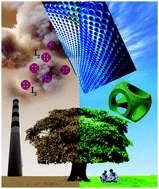Iodine capture in porous organic polymers and metal–organic frameworks materials
Abstract
The enrichment of radioactive iodine in the waste of nuclear industries threatens human health, and thus the efficient capture of iodine has attracted a great deal of attention in recent years. Porous organic polymers (POPs) and metal–organic frameworks (MOFs), new classes of porous materials, act as outstanding candidate adsorbent materials in this field due to their high surface areas, permanent tunable porosities, controllable structures, high thermal/chemical stabilities, versatility in molecular design and potential for post-synthetic modification. Herein, this review focuses on the research progress of these two types of porous materials for highly efficient iodine capture. We analyze and discuss some valid strategies for enhancing their iodine uptake, including increasing their surface area and pore volume, using organic building units with unique configurations and functions, introducing chemical functional groups to provide high-enthalpy binding sites, and further processing of POP and MOF materials. Indeed, there are many special structural and functional features found in porous POP and MOF materials, which make them unique and merit further exploration. Thus, we expect to see their usage grow as this field progresses.

- This article is part of the themed collections: Materials Horizons 10th anniversary regional spotlight collection: China and A selection of 2019 articles


 Please wait while we load your content...
Please wait while we load your content...